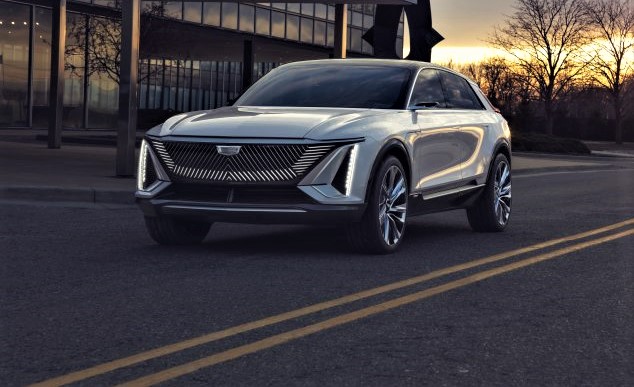Debate over whether to include hybrids in General Motors’ future product plans ultimately pushed the company’s executives to move aggressively toward battery-electric vehicles, GM President Mark Reuss says.
Reuss notes during a CES 2021 conversation with Malcom Gladwell, author of the The Tipping Point, that GM concluded about two years ago it didn’t want to spend another dollar in R&D “on things that carry two propulsion systems.”
From that point, it was easy for GM to focus on battery-electrics and commit to rolling out 30 new BEVs by 2025. “Quite simply it’s the right thing to do,” Reuss says, adding he wants his children to enjoy the natural world as he has.
The electrification decision also forced GM to vertically integrate within the company the development of both the powertrain for EVs and the battery that will power the vehicles.
“I think over the last roughly five years we have cut the cost of our batteries in half,” Reuss says. He predicts further improvements as cell costs drop and energy density increases.
GM also is making its batteries “backwards compatible,” meaning they can change to a new chemistry in the future, Reuss says.
As cell costs come down and the cost of emissions controls on internal-combustion engines increases, ICE technology will become more expensive than battery-electric powertrains, he says, adding, “I think the timing is exactly right, and for me that is tremendously exciting.”
At the same time, GM has developed a new, EV-specific vehicle intelligence platform, or VIP, capable of supporting vehicles with varying “rooflines and chair heights” ranging from the upcoming GMC Hummer utility vehicles to the Cadillac Lyriq sedan (below), which is due in 2022, Reuss says.
The VIP platform allows GM to create different vehicles while avoiding multimillion-dollar retooling costs, he says.
 GM has been conducting consumer research into EVs for the past seven years, Reuss says, and the findings have given the automaker a good sense of what American customers think.
GM has been conducting consumer research into EVs for the past seven years, Reuss says, and the findings have given the automaker a good sense of what American customers think.
Electric vehicles have gained ground on the East and West coasts. But in the middle of the country, where potential customers often need to travel longer distances and charging stations are far apart, EVs face challenges GM hopes it can overcome.
GM’s goal is to enable battery recharging without major inconvenience. If customers can charge their battery to 80% in 10 or 15 minutes, that is significant, says Reuss, who notes the average refueling stop for gasoline for many drivers is around 10 or 15 minutes.
Research indicates 300 miles (483 km) of range is the threshold at which EVs become more attractive, he says, noting the new Hummer due out later this year will have a range of 300 to 350 miles (564 km).
Reuss vows GM’s EV fleet will offer affordable prices by 2025 as the automaker expands the number of vehicles it offers, providing customers with more choices.
GM also plans to enter the market for commercial vehicles, where fleet customers are looking for new options, he says, adding dealers will play a big part in the automaker’s electrification effort. “That footprint is there, and we don’t have to build anything,” Reuss says.
The GM president asks Gladwell if the author thinks EV acceptance is coming closer to the tipping point. Gladwell’s book describes the tipping point phenomenon as an idea, trend or social behavior that “crosses a threshold, tips and spreads like wildfire.”
Gladwell, who describes himself as something of a car buff, replies that he believes GM’s electrification push is tremendously important for psychological reasons.
“Psychologically it changes the dynamic. The average person is terrified of buying a car from a startup,” Gladwell says, but having a company such as GM with its long history “normalize” the experience of buying an EV is significant.
Cadillac Lyriq BEV due out in 2022.





